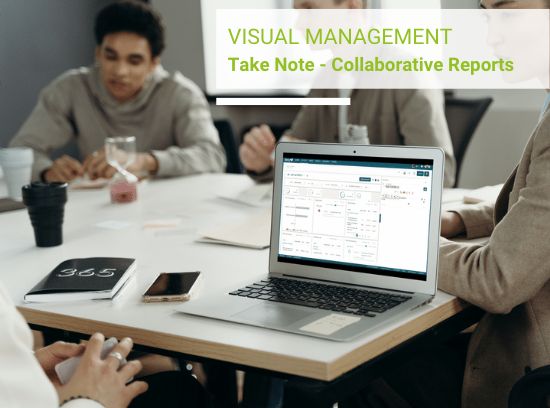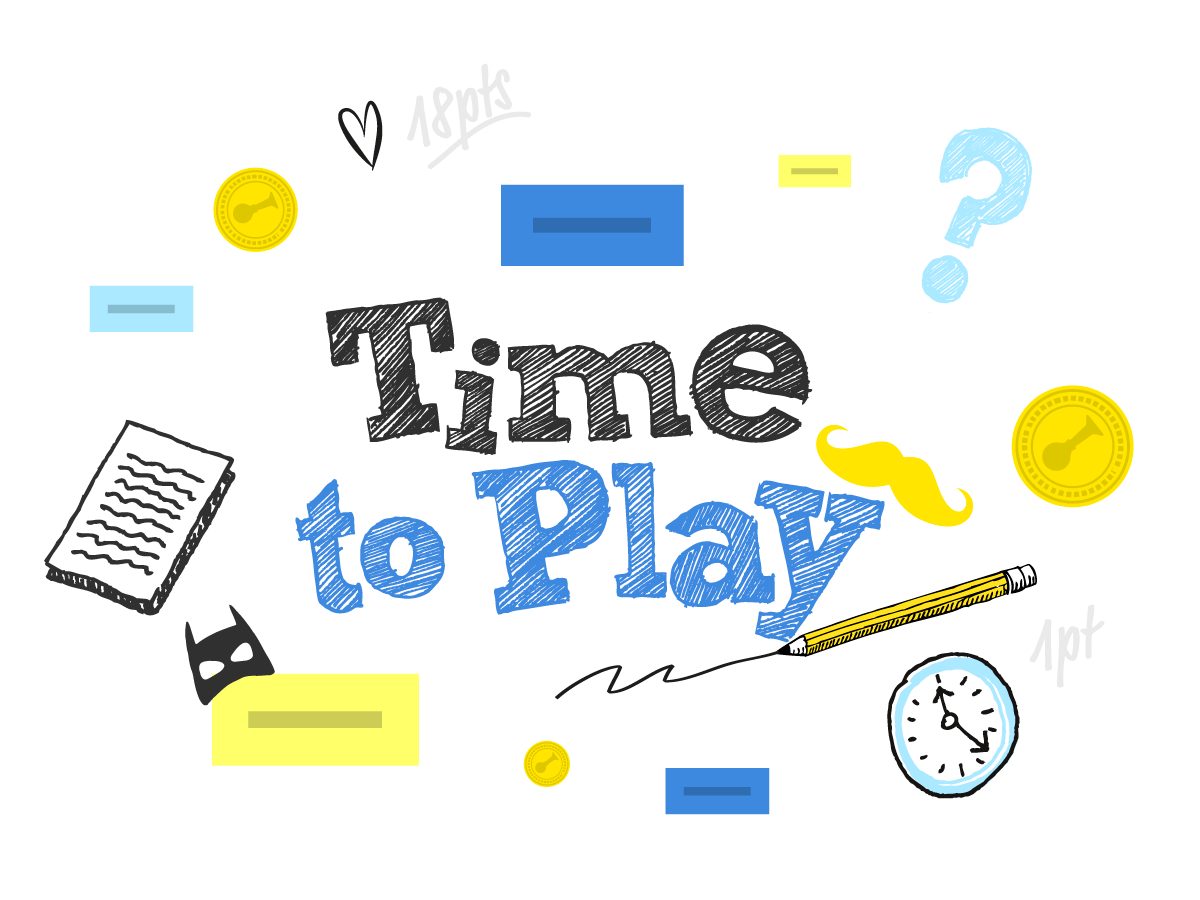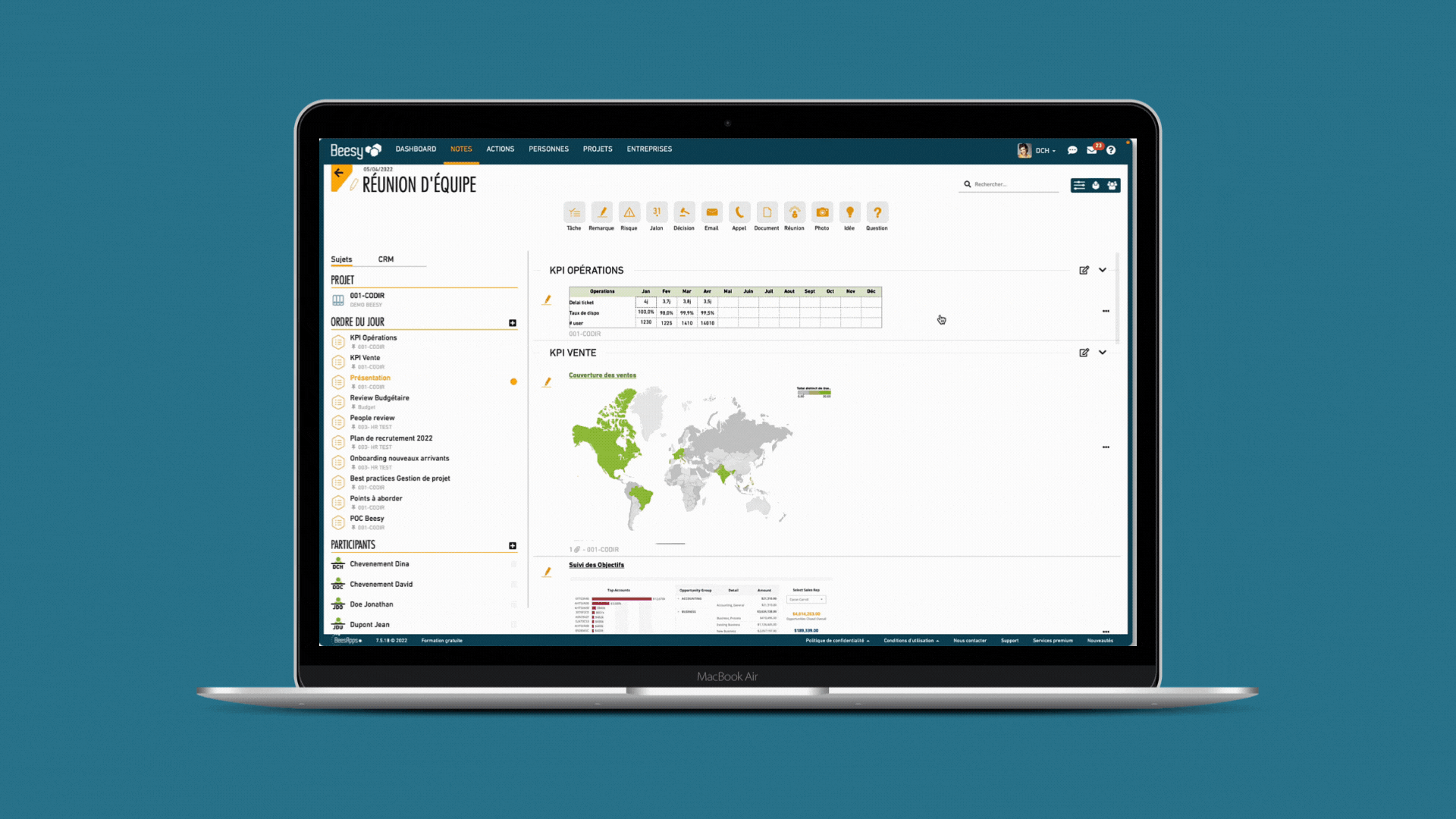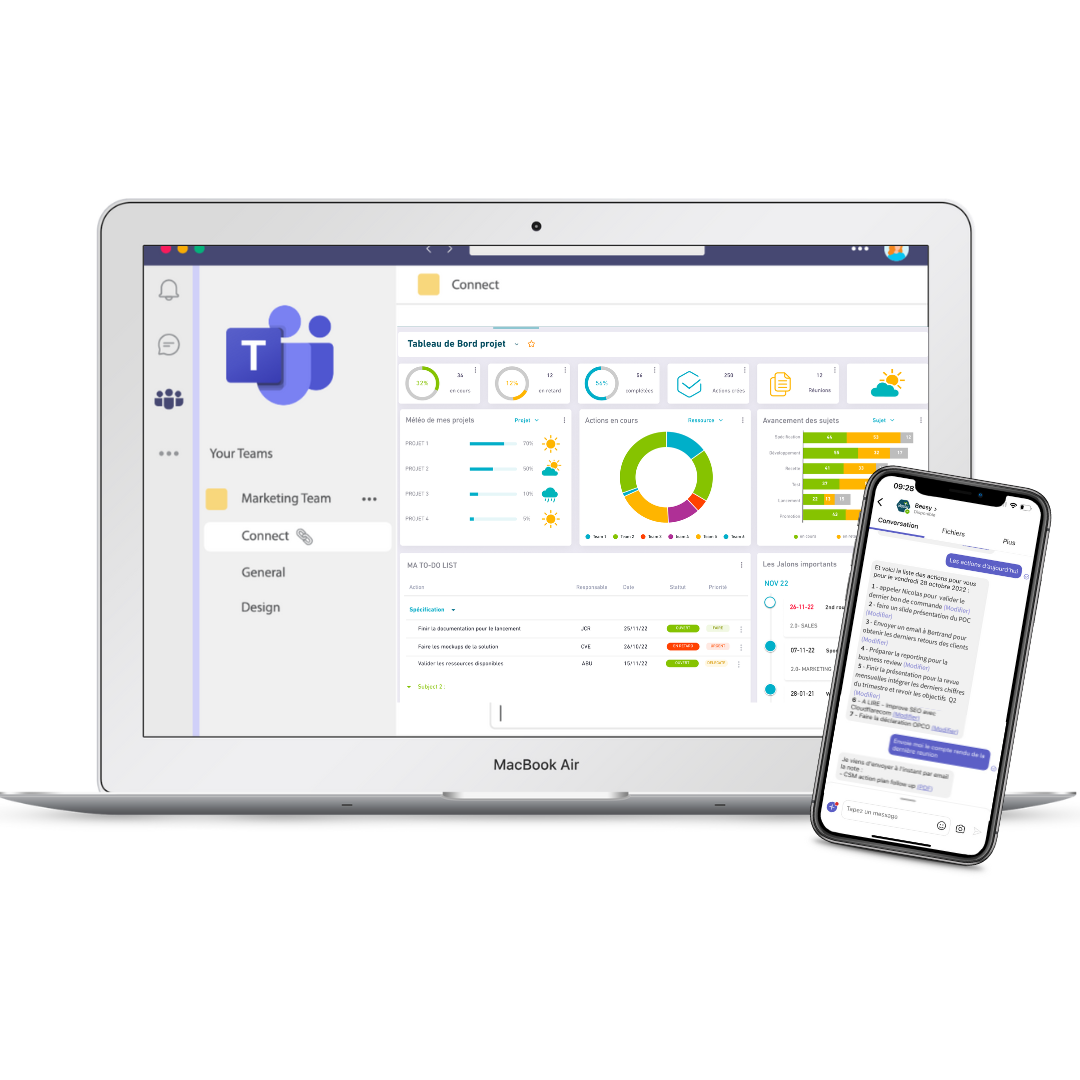Create or update your meeting notes, directly from your activity tracking Reports At the same time as you track your...

Participative Management is a concept that emphasizes the involvement and participation of the team in decision making and problem solving. This approach aims to strengthen the motivation of employees, improve their commitment and encourage innovation and creativity within the company.
The value of participative management is multiple. First of all, it allows to mobilize the teams and to involve them in the achievement of the company’s objectives. Indeed, by giving a voice to all, creativity and innovation are stimulated and the skills of each person are developed. By soliciting everyone’s opinion, different points of view are taken into account and more thoughtful choices can be made to suit the situation.
Participative management encourages a climate of trust and openness in the company. This approach can help reinforce team cohesion and improve communication within the company.
However, it has its limits. It requires additional preparation and animation time, a good knowledge of the processes, communication and conflict management techniques. For example, it is difficult to implement this type of management when companies have complex processes and a large diversity of employees.
To implement participative management, it is important to work on the company’s culture and to make the teams aware of the advantages of this approach. It is also necessary to define the roles and responsibilities of each person, to set up collaborative work methods and to encourage open and transparent communication.

Motivation is a key element in ensuring team performance and efficiency. A motivated and committed team is more productive and creative, which has a positive impact on the company’s results.
Among the most useful tools for improving motivation and engaging the team, we can mention more traditional solutions such as financial, material or symbolic rewards, or individual interviews, which are moments of listening, dialogue and feedback, and which allow us to understand the expectations, motivations and difficulties of team members.
In a more collaborative approach, it is useful to combine the classic approaches with more interactive and playful solutions such as challenges and role playing to work on team cohesion. Team cohesion is essential for the functioning and success of a team in a participative management.
The purpose of brainstorming is to stimulate creativity and innovation by encouraging participants to freely express ideas, even the craziest ones.
The main advantage of brainstorming is that it allows you to generate a large number of ideas in a short time.
Several brainstorming workshops are available to you:

You just need to define the KPI associated with the team, define a rule of the game, a win and animate it regularly to ensure its success.
Some ideas for challenges:
Role-playing games are exercises for sharing and simulation, which allow to work on individual and collective skills, while having fun.
To manage your collaborative management meetings, you can use the online templates of Klaxoon

Gathering feedback from teams allows to take into account their opinions and needs, and to reinforce their sense of belonging and commitment. Satisfaction surveys or polls allow to measure and analyze the opinions and feelings of team members, and to identify the strengths and weaknesses of the company;
There are several ways to solicit feedback from teams, such as holding regular meetings, setting up suggestion or voting systems, or providing online surveys.
Several platforms or solutions are available to manage team feedback. Here are some examples:
Team meetings promote communication and collaboration within the team, and monitor progress and obstacles encountered, which helps manage the team and achieve the set KPIs. It can also facilitate the rapid resolution of problems and conflicts by providing an open and constructive discussion space.
To organize effective team meetings, the essential steps not to be missed:

Collaborative solutions are the most effective tool for the participative manager to organize work, animate and manage his activity and his team in a collaborative spirit. This type of solution improves communication and collaboration within the team, allowing all team members to have easy and transparent access to information and action plans.
A collaborative solution can also allow the participative manager to monitor the team’s progress and performance in real time, which can help identify potential problems or opportunities for a quicker improvement. Finally, it can allow the team to work flexibly and to quickly adapt its action plan according to changes in the project or in the work environment.
The essential features of a collaborative solution for participative management:
These solutions can be used alone or in groups, in person or remotely, depending on the needs and preferences of each individual. They are adapted to different contexts and to different levels of team maturity.


These tools improve collaboration and efficiency by allowing team members to work in real time on common projects and quickly resolve issues that arise.
An instant messaging tool can also contribute to flexibility and mobility by giving team members the ability to communicate and work from anywhere, at any time.
The most popular instant messaging tools are WhatsApp, Slack and Microsoft Teams
These tools make it possible to work together on the same documents in real time, and to manage versions and access permissions to documents.
When it comes to document sharing solutions, there are many tools available in the market, such as Google Drive, Dropbox, Microsoft OneDrive, Box, etc. These tools can help team members easily share documents and work together on the same documents in real time, which can improve collaboration and productivity within the team.
The digital workplace is an indispensable tool in collaborative management. It can be defined as a virtual space that brings together all the tools and resources necessary for communication, collaboration, activity management and document sharing within the team.
Some examples of popular digital workplaces are Jalios, Exo, Google workspace or Microsoft Teams.
Microsoft Teams is a collaborative project management solution from Microsoft that combines communication, collaboration and project management tools in one place. These tools can help the participative manager to organize and manage his team and his projects more efficiently.

Participative management is a management approach that aims to involve team members in the company’s decisions and actions by giving them the opportunity to contribute significantly to the results.
To implement this approach, a participative manager may need a toolbox of communication, project management, document sharing, and digital workplace tools to help organize, lead, and manage his team and business more effectively. By using these tools strategically and encouraging the commitment and active participation of all team members, the participative manager can improve the productivity and performance of the company.
Find out how Beesy helps you implement participative management in our free webinar!
One-on-one meeting is a powerful management tool. It allows to take stock with your collaborator and establish clear objectives to be achieved in order to increase his productivity and efficiency. Each meeting should be prepared in the morning while you're organizing...
Information overload : management tools, Business Intelligence tools, CRM, emails... It is not the data that is missing!But the real challenge today is to be able to use all this information wisely to help teams manage their activity and track their strategy...
If meeting is all about stress, boredom, or wasted time for you, then now is the time to take action. Opt for the agile method to boost your meetings, meet your deadlines and above all think CO-LLE-CTIFA-G-I-L-E is the buzz word in most businesses. But in summary what...